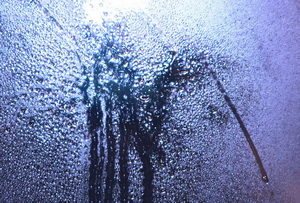Before addressing the problem of condensation in electrical cabinets, it helps to understand how it gets there. Furthermore, how knowing the volume of water released in the form of condensation is important for selecting a suitable drying system. For example, there is no point choosing a desiccant like silica gel, if it becomes overwhelmed within a week. Remember also that without a remedy the condensate can accumulate over time.
Markedly, condensation in electrical cabinets causes danger and damage to components and equipment. It causes insulation breakdown, tracking, rusting. This may lead to arching faults, or damage to expensive moisture sensitive components.
There are many ways of minimising condensation in electrical cabinets, and each has advantages and disadvantages. They may be expensive to buy, expensive to run, expensive to maintain, not be effective, or all four.
This article deals with condensation in electrical cabints rather than water ingress through poor sealing or down the cable conduits. But, these may compound the existing problem of condensation.
Temperature change
Temperature change has one of the biggest influences on the production of condensation. When warm moist air meets a cold surface, the air releases the water vapour to form condensation.
Water vapour is a gas formed by boiling water or by evaporation taking place at room temperatures. It mixes with the nitrogen and oxygen in the air with ease. The volume of water contained in the air depends on the temperature: warm air holds more than cool air.
For example, one cubic metre (1m³) of air at 20° C will hold about 17g of water whereas at 40° C it will hold up to 55g, or over three times as much. The volume of moisture held in 1m³ at various temperatures is available from tables of saturated vapour density (SVD). See gsu.edu. Water densities in air are often given in g/m³.
As temperature in the enclosure falls the air can hold less moisture and this condenses in the form of water. This may happen at night, or may result from a refrigeration process like drinking water pipes.
Water vapour
Water vapour is a gas formed by boiling water or by evaporation taking place at room temperatures. It mixes with the nitrogen and oxygen in the air with ease.
The volume of water contained in the air depends on the temperature: warm air holds more than cool air. For example, one cubic metre (1m³) of air at 20° C will hold about 17g of water whereas at 40° C it will hold up to 55g, or over three times as much.
The density of water in air is often given in g/m³. The amount of moisture held available from tables of saturated vapour density (SVD), for example from gsu.edu. From this information, it is possible to estimate the volume of water requiring removal.
The density of water vapour changes with temperature. Cooling the air reduces the water vapour it can hold. Continued cooling increases its relative humidity until the water vapour density reaches its saturation point (100%). At saturation point, the water vapour condenses into liquid water, usually on to a cool surface. This is the Dewpoint.
Avoiding condensation in electrical cabinets
Reduce the humidity of the air in the enclosure before temperature change and condensation occur. Otherwise the dew point will be too high or reached too fast for the system to cope.
Install a hygrostat in the cabinet with an alarm function to track what is happening. This can also be the trigger for active intervention like improved ventilation or space heating. This is important for unattended equipment.

